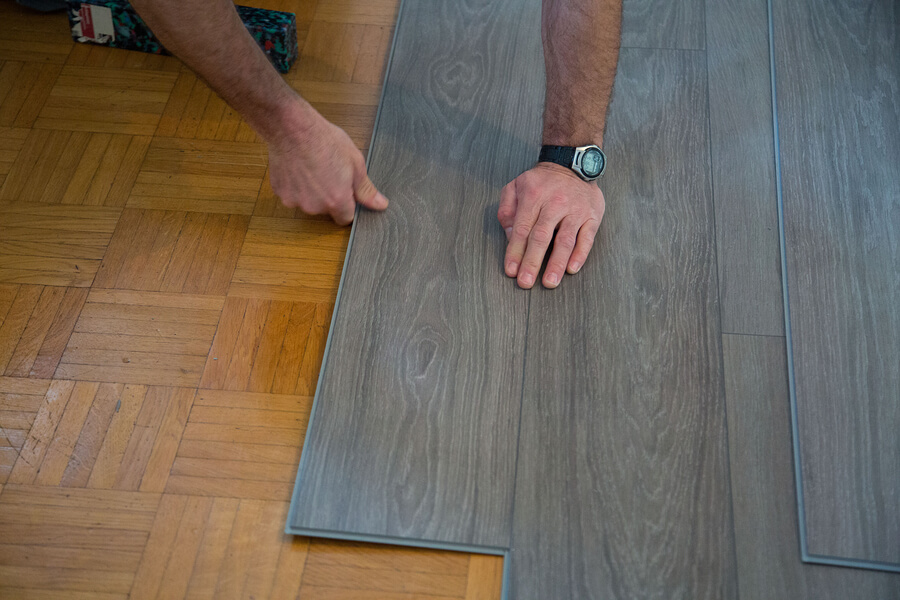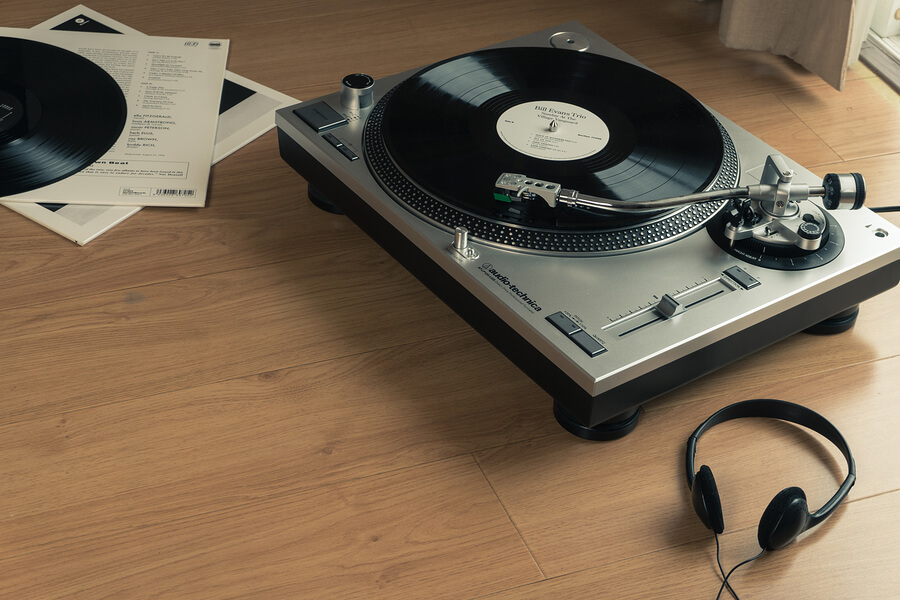Nowadays, vinyl flooring is used practically everywhere. You can find it in hospitals, schools, and homes due to the relatively low-maintenance nature of the material. Both LVT and standard vinyl flooring are perfectly suited for a multitude of environments. Vinyl has evolved through a long and rather strange history to become the enormously transformative material that it is today. Things to keep in mind when deciding between LVT and standard vinyl is where you’re putting it, how much the design and texture matter to you and how much you are willing to spend in both the long and short-term.
Vinyl, for all of its wonderful applications, was actually an accidental discovery. In 1872 Eugen Baumann a European chemist stumbled upon a rigid material by combining vinyl chloride with other gasses and wound up with something seemingly worthless as no uses could be found at the time. In 1926 Dr. Waldo Semon mixed vinyl chloride with other chemicals and the result he’d gotten was polyvinyl chloride or simply vinyl for short.
Initially used for shock absorbers, making tires and wire insulation during World War II, vinyl burst into home decorating in a big way. It was first promoted in 1933 as tough, cheap and easily installable. Even so, vinyl didn’t truly catch on until after World War II and was sold to soldiers for their new homes and commercial buildings.
From the 50’s on through the 70’s vinyl was everyone’s favorite flooring. It even survived the 80’s when it was discovered that some vinyl floor tiles contain asbestos and had to be replaced with newer, safer material. From there, vinyl flooring continued relatively unchanged until 2006 when LVT revolutionized floor decor once again.

Luxury Vinyl Tiles (LVT) are referred to as such because they can very closely imitate the look and texture of natural materials. It accomplishes this by having a realistic surface that is combined with different textures that can take on either the appearance of wood or stone.
LVT is often plank shaped, meaning that they can be easily installed and in various ways. You can horizontally install planks with peel-off glue backing or glue tiles down vertically. There’s even the option to mix and match different colors and textures. The tiles are usually long and narrow with a typical size being 7” wide and 48” long, although this can vary. Their pre-cut nature makes repairs easy as all it takes is removing the damaged tiles and replacing them with new ones. The composition of LVT depends on the style of the flooring. If it’s a wood-look then it will consist of all vinyl while stone-look will have minerals mixed in to give it its rock-like appearance.
LVT is the most expensive flooring when first purchased; it is more durable and easier to maintain making the overall lifetime cost significantly smaller. This type of flooring is the definite choice for anyone who is looking for comfort and easy upkeep.
LVT can be installed over a soft underlay to make standing for long periods of time a more pleasant experience. This type of flooring is superb for areas that have the daily challenge of standing up to water and stains such as laundry room and kitchens. LVT is so much more resistant to water than standard vinyl that it is also the better choice for wet, tropical areas and beach homes. Mold and mildew become much less of a concern with this type of vinyl. LVT can be easily installed by way of peel-off glue backing or interlocking tiles which can make laying, this type of vinyl much less of a time-consuming task for the thrifty DIY enthusiast.

Standard Vinyl Flooring Can be Classified into Two Types
- Vinyl sheet flooring
- Vinyl composition tile
Both types of flooring can take on the appearance of natural materials, but unlike LVT can come in unnatural colors and patterns as well.
Vinyl sheet flooring comes in large rolls in order to minimize or do away with seams in their entirety and measure around 6 to 16 feet. Vinyl composition tiles are usually square-shaped and measure from 12”x12” to 16”x16.
Vinyl sheet flooring is much more difficult to repair if a section is damaged due to its seamlessness. You would have no choice but to cut and replace the whole section as opposed to changing out one tile. This type of flooring is just as easy to keep clean with the occasional mopping as LVT is. Installing vinyl sheet flooring can be a bit more difficult than LVT due to needing glue to install.
The cost of vinyl sheet flooring tends to be cheaper than LVT, so if you are looking for a similar design variety at a lower cost than this is the vinyl flooring for you. Vinyl sheet is very good for high-traffic areas where slip-proof and easily disinfected flooring is a must which makes it an excellent fit for healthcare facilities.
At first glance, vinyl composition tiles may appear to be incredibly similar to LVT. VCT is convenient wherein a broken tile can be replaced without uprooting the rest of the intact flooring. Additionally, these two-floor tiles are similar in that they share the same four-layer composition of aluminum oxide, clear film, the design layer and the backing layer. They are, however, different in that they lack the amount of texture and design variety that LVT and vinyl sheet have VCT is the least pricey option when first purchased, but becomes much more expensive over its lifetime due to it needing to be stripped, waxed and polished so often.
VCT isn’t as common today as it once used to be, but can still be found in schools and hospitals because of the low buying price and durability that it offers. If you’re looking to save money, then you should consider vinyl composition tile. The majority of VCT tiles have dry back application, meaning that some of these vinyl tiles will need glue. For quick commercial installations, there are kinds of VCT that snap together.
Overall vinyl is a durable, versatile kind of flooring that can be used pretty much anywhere. LVT is your best option for functionality combined with high durability and comfort. This is the kind of flooring for someone who hates stepping on the cold tile in the morning or is always standing or walking in the kitchen. LVT can bring warmth and a degree of softness while being easy to clean and water resistant. Vinyl sheet flooring is the best option for slip-proof, easy to disinfect floors and is best utilized in places like hospitals. VCT may not have as many design options as the other two but has the cheapest upfront cost. Each type of floor previously mentioned has its perks. It is ultimately up to you to choose the vinyl floor you feel appropriate to bring out the best in the place you decide to install it.


